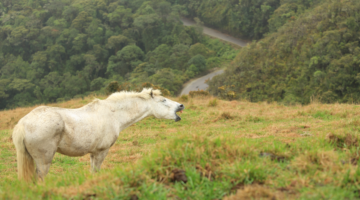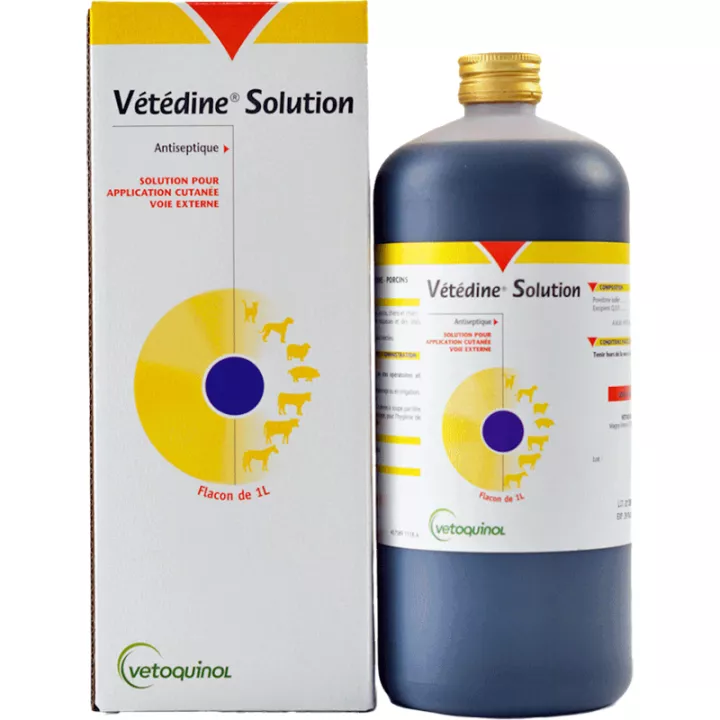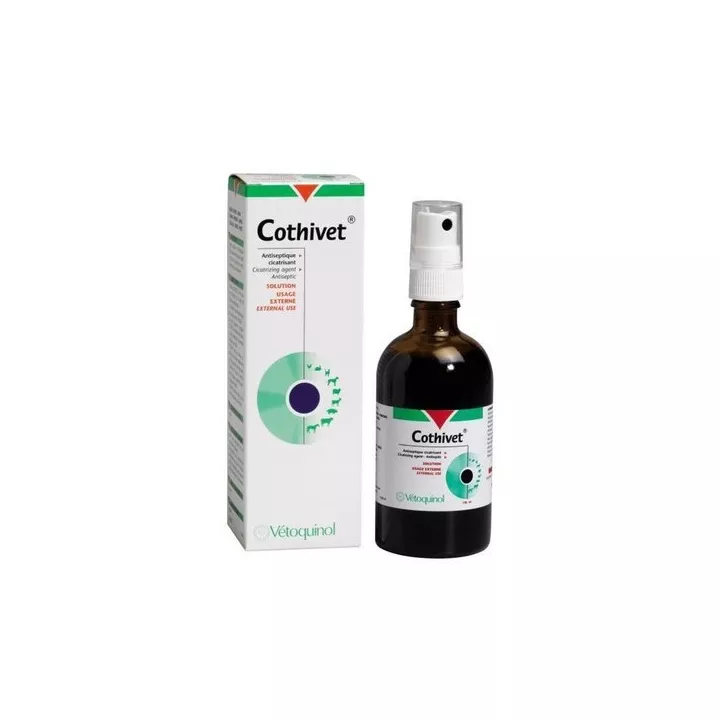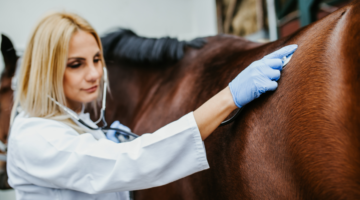What is Vetedine 10% External Antiseptic and Antifungal Solution used for?
Vetedine 10% is a povidone-iodine-based antiseptic and antifungal solution designed to effectively disinfect wounds and prevent infections in a wide range of animal species: cattle, sheep, horses, pigs, dogs, cats and poultry. Its bactericidal, fungicidal, detergent and deodorizing action makes it an essential ally in animal hygiene and care.
The povidone iodine present in Vetedine 10% releases active iodine progressively, providing long-lasting protection against pathogens. Unlike pure iodine, this solution is less irritating, providing gentle yet effective cleaning for sensitive skin and mucous membranes. It provides in-depth antisepsis, considerably reducing the risk of secondary infections.
One of Vetedine's major assets is its visual indicator of effectiveness: as long as the orange-brown color persists on the skin, the germicidal action remains active. When the color fades, the solution has been diluted and a new application is required to ensure optimum protection. This real-time monitoring guarantees maximum disinfection without guesswork.
Ideal for asepsis of wounds and surgical sites, this solution is particularly recommended for surgical procedures, pre-operative disinfection and general animal hygiene in agricultural and domestic environments. It is also used for vulvar and perineal cleansing in preparation for childbirth in farm animals.
Vetedine 10% remains effective even in the presence of pus, blood or necrotic tissue, guaranteeing optimal antisepsis even in difficult conditions. Its application leaves a protective film on the skin, prolonging its action while preventing reinfections. It also acts on bacterial and fungal spores, providing enhanced protection against the proliferation of pathogenic micro-organisms.
Thanks to its stable formulation, Vetedine 10% ensures a persistent action, which is essential to guarantee long-lasting protection, particularly in rural environments where animals are exposed to infection-prone environments. Its detergent power facilitates the removal of impurities, while preparing the area for the application of other treatments if necessary. Its aqueous texture ensures uniform penetration, ensuring even contact with all treated tissues.
If you're looking for a complete and reliable antiseptic, Vetedine 10% is the ideal solution. For deep cleansing and optimal disinfection, complete your care routine with Vetedine ExternalAntiseptic and AntifungalSoap 1L, which combines the same disinfectant properties with a convenient format for everyday use.
How to use this antiseptic and antifungal solution?
Vetedine 10% is used exclusively externally for antisepsis of skin and surgical sites. Follow these steps for optimal application:
- Wet the affected area with clear water.
- Lather for 2 to 3 minutes.
- Watch for the persistence of the orange-brown color: as long as it remains visible, the antiseptic efficacy is assured.
- Rinse thoroughly with clean water if necessary.
Vetedine 10% can be applied undiluted as a dab or irrigation solution for disinfecting wounds and antisepsis of high-risk areas.
For mucous membranes, it is preferable to use the diluted solution (1 to 2 tablespoons per liter of lukewarm boiled water), notably for gynecological hygiene and udder protection during lactation. It is also commonly used on post-operative animals to prevent bacterial proliferation.
Give your opinion on the advice for use and dosage of Vetedine 10% with our partner Verified opinions after your purchase.
Precautions for use
- Do not use on oozing dermatitis.
- Do not use in case of hypersensitivity to povidone-iodine or iodine.
- For external and veterinary use only.
- Do not use simultaneously with products containing mercury derivatives.
- Keep out of reach of children.
- In case of gestation, lactation or egg-laying, use should be assessed by a veterinarian.
- Avoid prolonged contact with eyes and sensitive mucous membranes.
What does it contain?
1 ml contains :
- Active substance(s): Povidone iodine: 100 mg.
- List of excipients : Glycerol, Poloxamer, Purified water.
Presentation
Available in 120 ml or 1L bottles, practical for regular use in veterinary or domestic environments.












